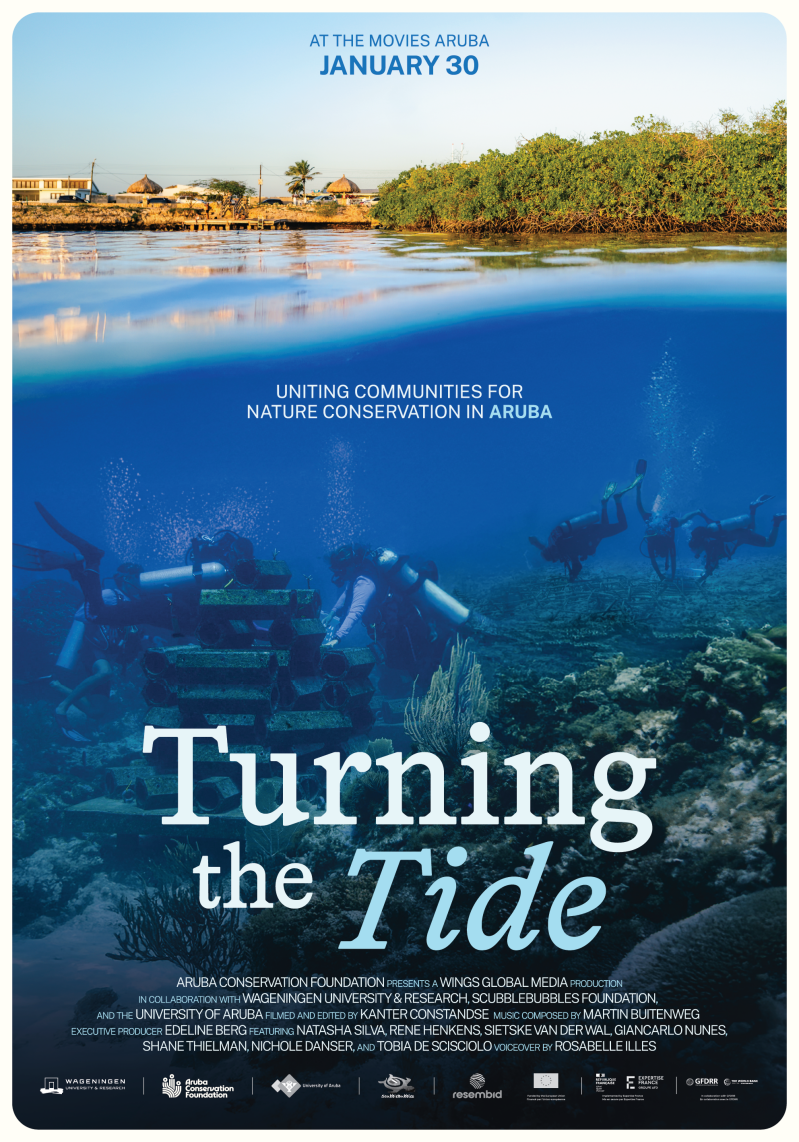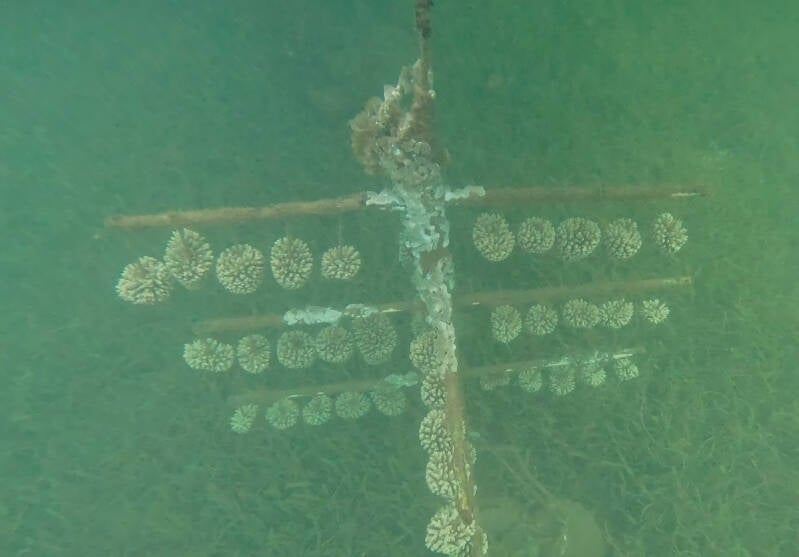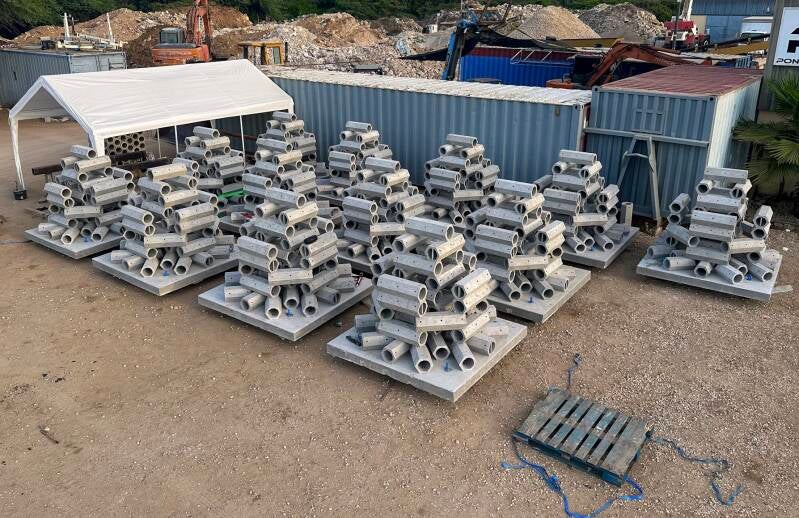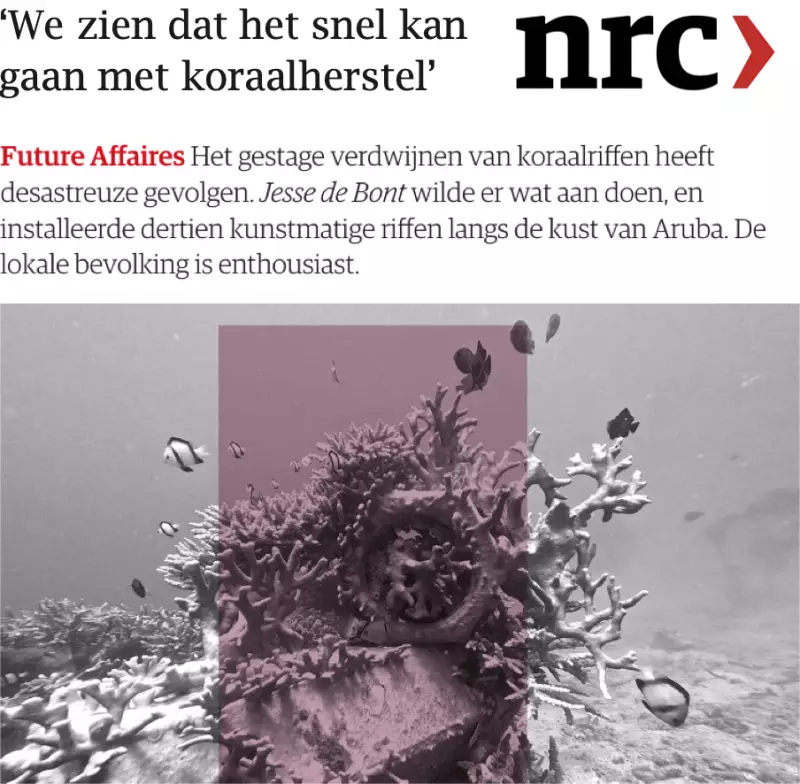South coast, Aruba
According to the Living Planet Report 2022 from the World Wide Fund for Nature, biodiversity loss in the Caribbean region is greater than any other region in the world. Loss of habitats for wildlife is one of the leading causes for this drastic decline. Since the economies of the Caribbean islands largely depends on a healthy and rich natural environment, biodiversity loss also affects economic sectors such as tourism and fishing. A 2018 study on the value of Aruba's nature, for example, concluded that the degradation of the marine environment could potentially lead to a 50% reduction in prosperity for the people living on the island. It is therefore crucial for people and planet to stop this decline and reverse the direction from biodiversity loss to biodiversity restoration. The ‘Turning the Tide’ program has been initiated to restore marine habitats, which leads to biodiversity increase in the ocean. In collaboration with Aruba National Park Foundation (FPNA), Wageningen University & Research, University of Aruba, Scubble Bubbles Foundation and STINAPA Bonaire, 13 artificial MOSES-reefs have been placed along the south coast of Aruba to facilitate marine life and restore coral reefs.
The placement of these artificial reefs is part of the EU-funded RESEMBID’s ‘Turning the Tide’ project. The goal of this project is to maintain economic resilience on Aruba through hands-on restoration and conservation of its marine biodiversity. ReefSystems has provided 13 large artificial reefs for the Turning the Tide project. These will placed on 4 locations spread along the south coast of Aruba. Each of the locations is in one of the marine parks managed by FPNA.
Stage 1: Preparation
After the EU-funding was received, various specialists were contacted to determine the research goals of this project. Four different areas along the south coast of Aruba were selected, where artificial reefs were going to be placed. The different sights were selected to research the effect of several differentiating factors on the enhancement of marine biodiversity. To construct artificial reefs with a highly complex 3D structure, which is the most effective to create habitats for marine species, ReefSystems transported 700 MOSES reef-units from Amsterdam to Aruba. In Aruba, coral nurseries were set up to cultivate new corals. Here small coral fragments are placed in a ‘coral tree’ under water. After 5 - 8 months, these corals have gained enough strength to be transplanted onto the newly placed artificial reef structures.
Stage 2: Construction
To promote this project, several press conferences were organized to inform the local community. This resulted in a high amount of volunteers that were very enthusiastic about the realization of this project. By involving the local community with this restoration project, awareness is created, which also leads to a sense of responsibility to expand this project and maintain the positive attitude towards the restoration of the marine ecosystem. When the MOSES reefs arrived in Aruba, 13 artificial reefs were constructed.
Stage 3: Installation
The reefs were transported to the harbor with trucks and lifted onto the installation vessel. A crane with a pulley was lifted onto the installation vessel as well to install the reefs one by one on the different locations. Some of the chosen areas were hard to reach by boat, so for these sights the reefs were placed close by, whereafter they were lifted again with balloons to transport them to their final location.
Stage 4: Protection
We are very happy to conclude that the locations where our reefs have been installed are now official protected ''RAMSAR sights''! The RAMSAR Convention is a convention on wetlands that was signed in 1971. The negotiations for the convention started in the 1960s by the different countries and NGOs for the protection of wetlands and their resources. Finally, it came into force in 1975. This event enables upscaling possibilities, whereafter the reef areas will be managed effectively, which will result in biodiversity increase!
Stage 5: Visit of royal highness princes Beatrix Oranje Nassau
Aruba National Park Foundation (FPNA) had the incredible opportunity to introduce Beatrix to the EU-Funded RESEMBID 'Turning the Tide' program, where coral reefs and mangrove forests are restored along the south coast of Aruba to create economic resilience for the people living on the island.
Stage 6: Coral transplantation
In the beginning of 2024 newly cultivated corals have been transplanted onto the artificial MOSES-reefs. In the coming years students from Wageningen University & Research and Aruba University will monitor the survival- & growth rates of the corals and marine biodiversity and biomass increase around the reefs over the coming years.
Stage 7: 'Turning the Tide' documentary in Cinema
The Wait is Over – Watch the Trailer for ‘Turning the Tide’! ‘Turning the Tide’ premieres at The Movies Aruba today. A first of its kind nature documentary about coral and mangrove restoration on Aruba for which ReefSystems provided artificial reefs. This project united local partners— Aruba Conservation Foundation (ACF), University of Aruba and Scubble Bubbles Foundation—in collaboration with international partner and project lead Wageningen University & Research. Funded by the EU’s RESEMBID Programme, ‘Turning the Tide’ is an emotional and action-packed real-life story of commitment, unity and hope as communities join forces for nature.

Every wave of change begins with a story. The ocean lies at the heart of Aruba’s way of life, shaping its culture, economy, and future. Turning the Tide, a RESEMBID-supported, EU-funded project, is dedicated to protecting and restoring the island’s fragile marine biodiversity. Through these powerful videos, compelling features, and vibrant storytelling, the voices and experiences of those driving this change are brought to life. This is about more than reporting results, it’s about celebrating the resilience, creativity, and determination that are driving sustainable change across the OCTs and showing how local action can create a ripple of impact.






















